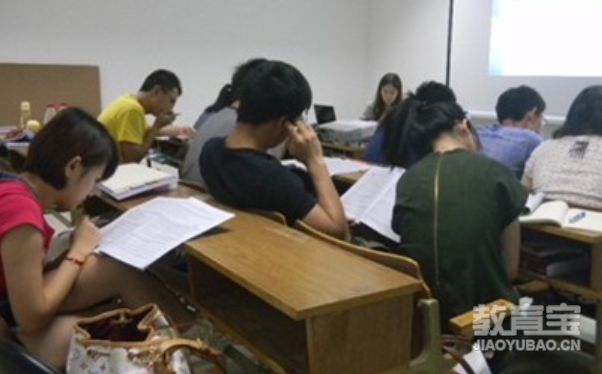 返回
教育头条
返回
教育头条

GMAT精选写作范文分享
GMAT考试中,写作是又难但又简单的部分,为什么说难呢?因为它确实难,为什么说他简单呢?因为它可以背范文呀,今天小编为大家分享的是GMAT写作范文精选文章,希望通过这篇文章的学习对你们有所帮助,下面跟随小编一起学习吧。
The following appeared in the editorial section of a local newspaper. “Commuter use of the new subway train is exceeding the transit company’s projections. However, commuter use of the shuttle buses that transport people to the subway stations is below the projected volume. If the transit company expects commuters to ride the shuttle buses to the subway rather than drive there, it must either reduce the shuttle bus fares or increase the price of parking at the subway stations.” Discuss how well reasoned.。. etc.
The author concludes that the local transit company must either reduce fares for the shuttle buses that transport people to their subway stations or increase parking fees at the stations. The reasons offered to support this conclusion are that commuter use of the subway train is exceeding the transit company’s expectations, while commuter use of the shuffle buses is below projected volume. This argument is unconvincing because the author oversimplifies the problem and its solutions in a number of ways.
To begin with, by concluding that the transit company must either reduce shuttle fares or increase parking fees, the author assumes that these are the only available solutions to the problem of limited shuttle use. However, it is possible that other factors—such as inconvenient shuttle routing and/or scheng, safety concerns, or an increase in carpools—contribute to the problem. If so, adjusting fares or parking fees would might not solve the problem.

In addition, the author assumes that reducing shuttle fees and increasing parking fees are mutually exclusive alternatives. However, the author provides no reason for imposing an either/or choice. Adjusting both shuttle fares and parking fees might produce better results. Moreover, if the author is wrong in the assumption that parking fees and shuttle fees are the only possible causes of the problem, then the most effective solution might include a complex of policy changes—for example, in shuttle fares, parking fees, rerouting, and rescheng.
In conclusion, this argument is weak because the author oversimplifies both the problem and its possible solutions. To strengthen the argument the author must examine all factors that might account for the shuttle’s unpopularity. Additionally, the author should consider all possible solutions to determine which combination would bring about the greatest increase in shuttle use.
The following appeared in the editorial section of a local newspaper. “Commuter use of the new subway train is exceeding the transit company’s projections. However, commuter use of the shuttle buses that transport people to the subway stations is below the projected volume. If the transit company expects commuters to ride the shuttle buses to the subway rather than drive there, it must either reduce the shuttle bus fares or increase the price of parking at the subway stations.” Discuss how well reasoned.。. etc.
The author concludes that the local transit company must either reduce fares for the shuttle buses that transport people to their subway stations or increase parking fees at the stations. The reasons offered to support this conclusion are that commuter use of the subway train is exceeding the transit company’s expectations, while commuter use of the shuffle buses is below projected volume. This argument is unconvincing because the author oversimplifies the problem and its solutions in a number of ways.
To begin with, by concluding that the transit company must either reduce shuttle fares or increase parking fees, the author assumes that these are the only available solutions to the problem of limited shuttle use. However, it is possible that other factors—such as inconvenient shuttle routing and/or scheng, safety concerns, or an increase in carpools—contribute to the problem. If so, adjusting fares or parking fees would might not solve the problem.

In addition, the author assumes that reducing shuttle fees and increasing parking fees are mutually exclusive alternatives. However, the author provides no reason for imposing an either/or choice. Adjusting both shuttle fares and parking fees might produce better results. Moreover, if the author is wrong in the assumption that parking fees and shuttle fees are the only possible causes of the problem, then the most effective solution might include a complex of policy changes—for example, in shuttle fares, parking fees, rerouting, and rescheng.
In conclusion, this argument is weak because the author oversimplifies both the problem and its possible solutions. To strengthen the argument the author must examine all factors that might account for the shuttle’s unpopularity. Additionally, the author should consider all possible solutions to determine which combination would bring about the greatest increase in shuttle use.
以上就是教育宝头条为大家带来的GMAT精选写作范文分享,感谢您的观看GMAT相关资讯。本站提供GMAT培训、资讯、资料,详细联系我微信:18560125702喜欢记得点赞哦,教育宝头条,每天都为你带来新鲜的学习资讯,别忘了关注哦。返回教育宝头条
【免责声明】本文仅代表作者本人观点,与教育宝无关。教育宝对文中陈述、观点判断保持中立,不对所包含内容的准确性、可靠性或完整性提供任何保证。请读者仅作参考,特此声明!




